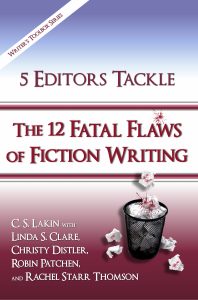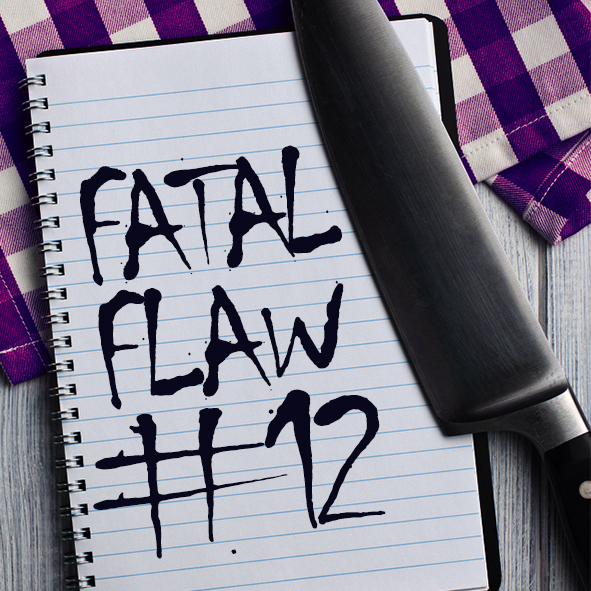31 Stylistic Devices for Creative Writers
Today’s guest post is by Rose Scott:
Without figurative language, writing would be plain and shallow. The more stylistic devices you know, the more unique your writing can be. If writing is your passion, you probably already know a dozen or so stylistic devices, but I’m betting there are a few on this list you’ve never heard of.
Take a look at this comprehensive list of stylistic devices and see if any might work in your current WIP (work in progress). Of course, you want to be reasonable and not go overboard with forced prose. But I’m sure you can find great places to utilize these wonderful literary techniques.
1. Adnomination
Repetition of words with the same root. The difference lies in one sound or letter. A nice euphony can be achieved by using this poetic device.
Examples: “Nobody loves no one.” (Chris Isaak). Someone, somewhere, wants something.
2. Allegory
Representation of ideas through a certain form (character, event, etc.). Allegory can convey hidden meanings through symbolic figures, actions, and imagery.
Example: Animal Farm by George Orwell is all about the Russian Revolution. And characters stand for working and upper classes, military forces, and political leaders.
3. Alliteration
The repeated sound of the first consonant in a series of words, or the repetition of the same sounds of the same kind at the beginning of words or in stressed syllables of a phrase.
Examples: A lazy lying lion. Peter picked a peck of pickled peppers. Sally sells seashells by the seashore.
4. Allusion
Reference to a myth, character, literary work, work of art, or an event.
Example: I feel like I’m going down the rabbit hole (an allusion to Alice’s Adventures in Wonderland by Lewis Carroll).
5. Anaphora
Word repetition at the beginnings of sentences in order to give emphasis to them.
Example: “Let freedom ring from the mighty mountains of New York. Let freedom ring from the heightening Alleghenies of Pennsylvania. Let freedom ring from the snow-capped Rockies of Colorado. Let freedom ring from the curvaceous slopes of California.” (Martin Luther King)
Opposite: Epiphora. Word repetition at the end of sentences.
Example: “And that government of the people, by the people, for the people, shall not perish from the earth.” (Abraham Lincoln)
6. Antithesis
Emphasizing contrast between two things or fictional characters.
Example: “Love is an ideal thing, marriage a real thing; a confusion of the real with the ideal never goes unpunished.” (Johann Wolfgang von Goethe)
7. Apostrophe
Directed speech to someone who is not present or to an object.
Example: “Work on, my medicine, work! Thus credulous fools are caught.” (William Shakespeare)
8. Assonance
Repetition of vowels in order to create internal rhyming.
Example: “Hear the mellow wedding bells.” (Edgar Allan Poe)
Related: Consonance. Repetition of consonants.
9. Cataphora
Mentioning of the person or object further in the discourse.
Examples: I met him yesterday, your boyfriend who was wearing the cool hat. If you want some, here’s some cheese. After he had received his orders, the soldier left the barracks.
10. Climax
Arranging text in such a manner that tension gradually ascends.
Example. He was a not bad listener, a good speaker and an amazing performer.
Opposite: Anticlimax. Tension descends.
11. Charactonym (or Speaking Name)
Giving fictional characters names that describe them.
Example: Scrooge, Snow White.
12. Ellipsis
Word or phrase omission.
Example: I speak lots of languages, but you only speak two (languages).
13. Euphemism
Replacing offensive or combinations of words with lighter equivalents.
Example: Visually challenged (blind); meet one’s maker (die)
Opposite: Dysphemism. Replacing a neutral word with a harsher word.
14. Epigram
Memorable and brief saying, usually satirical.
Example: “For most of history, Anonymous was a woman.” (Virginia Woolf)
15. Hyperbole
Exaggeration of the statement.
Example: If I’ve told you once, I’ve told you a thousand times.
Opposite: Litotes. Understatement.
- Hypophora
Asking a question and answering it right away.
Example: Are you going to leave now? I don’t think so.
17. Irony
There are three types of irony:
- Verbal (Antiphrasis) – using words to express something different from their literal meaning for ironic effect (”I’m so excited to burn the midnight oil and write my academic paper all week long”).
- Situational – result differs from the expectation (Bruce Robertson, a character of Filth, is a policeman. Nonetheless, he does drugs, resorts to violence and abuse, and so on).
- Dramatic – situation is understandable for the audience but not the fictional character/actor (audience sees that the fictional characters/actors will be killed now, though the characters don’t expect it).
17. Merism
Describing people/objects by enumerating their traits.
Example: Lock, stock, and barrel (gun); heart and soul (entirety)
18. Metalepsis
Referencing one thing through the means of another thing, which is related to the first one.
Example: “Stop judging people so strictly—you live in a glass house too.” (A hint at the proverb: people who live in glass houses should not throw stones.)
19. Metaphor
Comparing two different things that have some characteristics in common.
Example: “Love is clockworks and cold steel.” (U2)
20. Metonymy
Giving a thing another name that is associated with it.
Example: The heir to the crown was Richard. (the crown stands for authority)
21. Onomatopoeia
Imitating sounds in writing.
Example: oink, ticktock, tweet tweet
22. Oxymoron
Combining contradictory traits.
Example: Living dead; terribly good; real magic
23. Parallelism
Arranging a sentence in such a manner that it has parallel structure.
Example: “Tell me and I forget. Teach me and I may remember. Involve me and I will learn.” (Benjamin Franklin)
Opposite: Chiasmus. An inverted parallelism.
Examples: “To stop, too fearful, and too faint to go.” (Oliver Goldsmith); “My job is not to represent Washington to you but to represent you to Washington.” (Barack Obama)
24. Parenthesis
Interrupting a sentence by inserting extra information enclosed in brackets, commas, or dashes.
Example: Our family (my mother, sister, and grandfather) had a barbeque this past weekend.
25. Personification
Attributing human characteristics to nonhumans.
Example: Practically all animals in fairy tales act like human beings. They speak and have traits that are typical of people.
26. Pun
A kind of wordplay. Here are a few types of puns:
- Antanaclasis – repetition of the same word or phrase, but with a different meaning (“Cats like Felix like Felix.”—“Felix” catfood slogan).
- Malapropism – usage of the incorrect word instead of the word with a similar sound (“optical delusion” instead of “optical illusion”).
- Paradox – self-contradictory fact; however, it can be partially true (“I can resist anything but temptation.”—Oscar Wilde).
- Paraprosdokian – arranging a sentence in such a manner so the last part is unexpected (You’re never too old to learn something stupid).
- Polyptoton – repetition of the words with the same root (“The things you own end up owning you.”—Chuck Palahniuk).
27. Rhetorical question
Questioning without expecting the answer.
Example: Why not? Are you kidding me?
28. Simile
Direct comparison.
Example: “Your heart is like an ocean, mysterious and dark.” (Bob Dylan)
29. Synecdoche
Generalization or specification based on a definite part/trait of the object.
Example: He just got new wheels. (car)
30. Tautology
Saying the same thing twice in different ways.
Example: first priority; I personally; repeat again
31. Zeugma (or Syllepsis)
Applying a word to a few other words in the sentence in order to give different meaning.
Example: Give neither counsel nor salt till you are asked for it.
Quite a huge list, right? With all these stylistic devices, your writing can potentially be so much more attractive. If you find it difficult to memorize them all, here’s what I recommend you do: make flashcards. Write a stylistic device on one side of the flashcard and its meaning on the other side, then work on memorizing a few a day. Voila! Enjoy your learning and writing.
 Rose Scott combines tutoring and freelance writing. She is addicted to teaching and can’t imagine her life without writing. Rose welcomes your linguo-stylistic questions and will be glad to help you with literary analysis. Connect with her on Facebook and LinkedIn.
Rose Scott combines tutoring and freelance writing. She is addicted to teaching and can’t imagine her life without writing. Rose welcomes your linguo-stylistic questions and will be glad to help you with literary analysis. Connect with her on Facebook and LinkedIn.
Feature photo by Heather Wilson Smith
Have you been learning helpful insights on how to spot flaws in your fiction writing? Know some writers who might benefit from these in-depth posts? The book is out!
You can find 5 Editors Tackle the 12 Fatal Flaws of Fiction Writing on all online venues, in print or as an ebook.
 It’s currently the #1 best seller on Amazon for reference guides-editing!
It’s currently the #1 best seller on Amazon for reference guides-editing!
Here are some links: Kindle, iBooks, Nook, Kobo, Oyster, and Scribd.
Don’t just give any book as a gift this holiday season. Give the book that will help the writers in your life become better writers! They’ll thank you!
Reviewers say:
“I wish I’d had this book when I wrote my first manuscript.”
“Every author needs this book on their shelf. From nothing happening to too much backstory to body parts behaving badly, this book has it all and tells you how to fix it with examples you can follow. Don’t have the money to hire an editor for your novel? Use this book, one of several in the Writer’s Toolbox Series, to mark your own book up in red. The fun part of this book is being able to read each entry and then determining what is wrong with it before you read the answer. Not quite sure what is wrong? That is okay, because the fatal flaw is fixed right before your eyes.”
“Another new and favorite part of the book is the checklist at the end of each chapter. I like having a quick wrap-up to check my work against. It’s great to rifle back through the detailed information after reading, but I’m more likely to use the checklists reminders over and over.”
“I have well over a hundred writing books on my bookcase and dozens more on my Kindle, but Fatal Flaws deserves to become the newest addition.”
“Got a feeling that something’s not quite right in your story? Maybe you don’t even know what it is, but you sense something’s not working? Get this book! It’s a mini-lecture series and workshop taught in a friendly manner. Your writing will significantly improve if you read this book and follow the suggestions.”
“This is an excellent study book for published and non-published writers alike. I love the fact that I got input five different editors. So many teaching books are written by just one person. Besides, where else can you get this much writing instruction for $4.99?”
Exactly! Our thanks to all who did an early read and review. Your comments will help others see the value of this comprehensive book. And may this book help you all to write awesome books in 2016!
~Susanne, Linda, Christy, Robin, and Rachel








great post! thanks Rose, for a super stellar list of dynamic devices! i’ve saved the list for future and fair-constant reference. there’s always something good on this blog! Merry Christmas everyone!!
Oh man, it’s like Christmas has come early. I love posts like this – and I’ll both share it *and* copy it to my desktop ha!
Items I didn’t know about but immediately fell in love with: adnomination, anaphora, hypophora (I hadn’t realised, but I do this all of the time, which now seems pretty annoying!), and zeugma. Thank you once again!
Glad you enjoyed this post! Have a happy Christmas!
Hi Rose!
Thanks much for you “31 Stylistic Devices … …” I was in the process of writing a transcript when I sort of stumbled across the need to correctly define a scenario.
I did a quick surf, directly asking for what I wanted, this popped up. I scanned your list and had the “Eureka!” moment. “METAPHOR!”
It’s really great of you also sharing without obligation. We do a lot of that in our realm of things.
Okay! Thanks again! Please, have a great weekend!
P.S. For you Ms. Lakin. Thanks for making this site available! Please, have a great weekend, as well!
Thanks for the kind words! Glad you are getting some benefit from the blog’s content!
Do you have a list of stylised paragraphs? Not just the main 4 (descriptive, narrative, expository, and persuasive), but other types of paragraphs that apply rhetorical ornaments and devices.
Forgot to say thank you for this lovely and informative post.
Wow this post has boost my understanding of the analysing the prose techniques in a book. Thank u very much
Dear Rose,
I greatly appreciate the time and effort you put into constructing this list. I especially enjoy how you introduced me to unfamiliar and complex stylistic devices. I will attempt to incorporate these techniques in my future writing. Synecdoche is a wonderful device that I have not heard of before, I’ll have to steal it :P. Is there any way I can contact you? I would love to have a nerdy conversation about English!
Sincerely,
Jenny Wales
It was interesting when you talked about how parallelism arranges sentences so their structure is parallel to each other. I’ve been wanting to find some poetry online to help me sort through my emotions from a loved one’s death last month. Thanks for teaching me these writing devices to look out for so I can understand the poems as effectively as possible.
Hi Rose I like your terms and I am using it on my writing my thesis on stylistics.
Actually, there are 32 stylistic devices in your list, since there are two no. 17.
Thankyou so much for the compilation.It was quite helpful to me while writing my work of literature especially since english isnt my first language.Its simply priceless